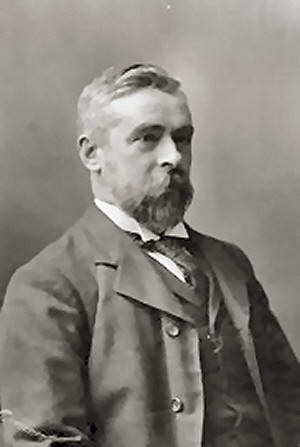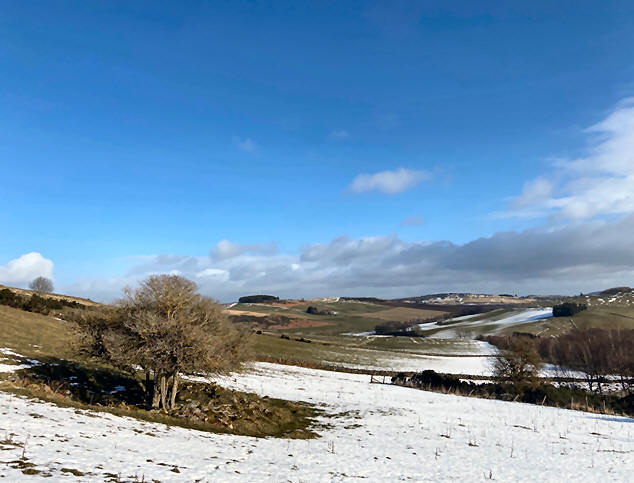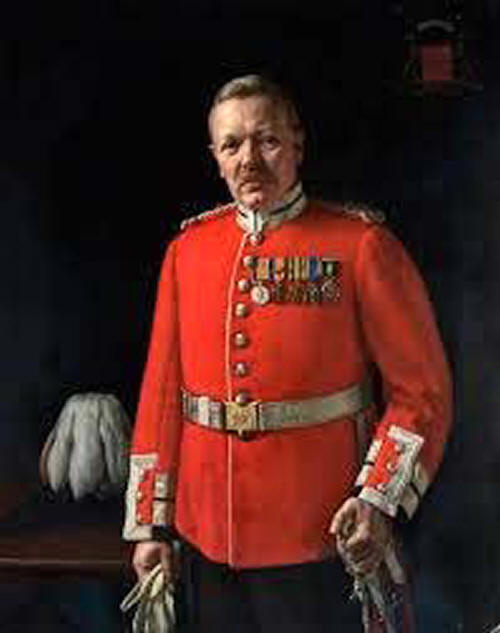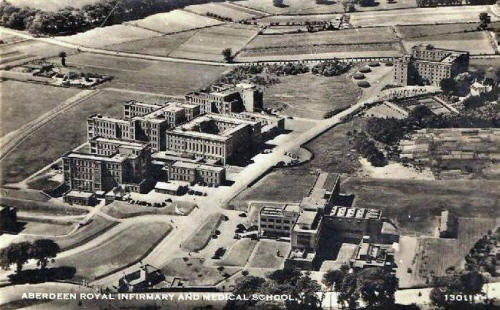|
WILLIAM WATT OF
ABERDEEN

Attached is a short piece
I’ve written for the Aberdeen Grammar School Former Pupils Magazine on
“William Watt of Aberdeen”...
Professor Graham Watt
MD FRCGP FRSE FMedSci CBE
In the Aberdeen Grammar
School Roll of Pupils 1795-1919, it is recorded that William Watt
attended Class I for the 1858-59 school year. He was born 12 years
earlier at Droichsburn, a croft on Dorsell farmland in the Vale of
Alford, the eldest of four children. His father, also called William
Watt, earned his living as a handloom weaver, with occasional farm work,
but had wider horizons as Secretary of the Rhynie Mutual Instruction
Union. In 1853, aged 29, he sold his weaving business and moved to
Aberdeen, having been recruited by William McCombie to join a team of
fledgling journalists on the newly established Aberdeen Free Press. The
family followed but their father’s health was poor due to phthisis (or
tuberculosis as it became known) and within a year his wife Isabel
Elmslie was a widow.
The family stayed in
Aberdeen and the young William entered the Grammar School, located at
that time in a one-storey building in Schoolhill, as attended by Byron
60 years previously (the present school buildings opened in 1863). When
his brother John died in July 1859 followed by his mother in October of
that year, both from phthisis, William left the Grammar School, an
orphan and the eldest of three siblings. Most probably they were looked
after by their mother’s family who were farmers at Cardenstone in
Leochel Cushnie.
Setting out in the world,
William became an apprentice to J&J Urquhart, chemists and druggists in
St Nicholas Street, Aberdeen. In a bold step he moved at age 19 to a
similar position at Dudley in the West Midlands, but his main interest
was in journalism, following his father’s example, and having taught
himself shorthand, which was an unusual skill at the time, he took up
journalist jobs in Dudley, and then with the Norwich Mercury and Dundee
Courier.
In 1872 he returned to
Aberdeen, at the instigation of William Alexander, his father’s former
colleague on the Aberdeen Free Press, beginning as a sub-editor but soon
progressing to joint proprietor and editor, a position he held until his
death 34 years later.
The 1870s and early 1880s
were a torrid time for agricultural politics in the North East. There
were three main interest groups – landowners, tenant farmers and farm
labourers. Huge improvements were underway. The big questions were who
were making the improvements and who would benefit when leases came to
an end. The Aberdeen Free Press, led by William Alexander, by then
ex-joint editor and author of the Doric novel Johnny Gibb of Gushetneuk,
took the side of tenant farmers, while the Aberdeen Journal supported
the landowners. (in 1922 the two papers would merge as The Press and
Journal).
In 1876 the Aberdeen
Journal had become a daily paper, like the Aberdeen Free Press in 1872,
countering what was described as "the pernicious influence" of the
Liberal papers by starting up a penny daily in the Conservative
interest. The driving force behind the venture was Colonel Thomas Innes
of Learney, who explained his interest in a letter to his neighbour
Alexander Innes of Drum
"The most important
omission was not being alive to the great change which within the last
few years has been coming over the tenant constituency…The construction
of a system of railways in the county centring in Aberdeen and the penny
newspapers have converted them from a most passive and docile into a
most active and jealous constituency, and they cannot be managed thro’
their lairds as formerly."
Mass meetings of
hundreds, and sometimes thousands, of tenant farmers were reported in
the Aberdeen Free Press. Matters came to a head in 1886 when
Aberdeenshire was rejected as "the 8th crofting county" and excluded
from the benefits and protections of the Liberal Government’s Croft
Holdings Bill. From then on, as Ian Carter commented in his book Farm
Life in North East Scotland 1840-1914, the northeast peasantry was
doomed. Unlike the Irish Land Acts of 1870 and 1881, there was to be no
shift in the balance of interest and power from landlords to tenants.
When Liberal Prime Minister Gladstone lost the 1886 general election,
land reform fell off the political agenda, which was dominated for the
next three decades by the issue of Irish Home Rule. The Aberdeen Free
Press became less radical.
William Watt wrote
"miles" of leading articles for the paper, witnessing and recording
events in what he later described as "the wondrous developments of the
time" as Aberdeen moved from mid-century economic depression to the huge
changes and challenges of the late Victorian age.
In a lecture to the
Aberdeen Philosophical Society in 1900 entitled Fifty Years’ of Progress
in Aberdeen (available on the Electric Scotland website, see below) he
recalled the building on arches of Union Street, Market Street and
Rosemount Viaduct, the harbour improvements, the city’s water supply,
the railway boom and bust ("It was on the 16th of March 1850 that the
first railway train crossed the Dee"), and the textile, papermaking,
granite, shipbuilding and fishing industries (there were no fishing
boats in Aberdeen harbour until the 1870s).
He was also what is
nowadays called a features journalist, reflecting his interests in
statistics, as a fellow of the Royal Statistical Society, and economics,
as a founding member of the British Economic Association. In his
prize-winning Newmarch Essay, he analysed recent legislation in terms of
its content, intentions and subsequent effects, expressing the view that
"hastily conceived legislation, reflecting political expediency in the
face of agitation and outrage could, by ignoring economic principles,
have unintended and contrary effects."
One of the economic
principles that Watt held close was Adam Smith’s observation, in his
Wealth of Nations, that economic progress is best served by the multiple
effects of individuals acting out of self-interest. He argued that
measures that restrained such self-interest were likely to be
counterproductive.
As a self-made man with
business interests – he chaired the Board of the Aberdeen, Leith and
Moray Firth Steam Ship Company, and was vice-chair of the Bon Accord
Property Investment Company – it is not difficult to see how this
argument might have appealed but it may also be important to consider
the times in which William Watt lived, involving huge technological and
social improvements, especially in agriculture, which had become hugely
more productive in his lifetime. Such improvements required investment
in a range of land improvements, which were much easier to finance and
deliver in large farms than in large numbers of smallholdings.
In addition to economic
issues he wrote a series of authoritative papers on fishing topics such
as the Natural History of the Herring, On Developing the Oyster
Fisheries of Scotland and The History and Statistics of the Herring
Industry in Norway and Sweden, which are still notable for their
readability and command of subject.
While local industries
came and went (as they continue to do) the enduring factor was the
character of the people. In his his magnum opus, a 500 page history of
the Counties of Aberdeen and Banff (also available on the Electric
Scotland website, see below), he concluded,
"Education may
accordingly be regarded as the most distinctive of the industries of
Aberdeen, and the yearly output of disciplined minds as the most
important of its products…..And thus it is as true today as it was five
or six generations ago, that the "natural ingenuity" of the inhabitants
is "improved by education, at once accessible and effective, along the
whole line from the elementary to the higher academic stages; and the
shires of Aberdeen and Banff continue to send far more than their
proportionate number of men into the learned professions and the higher
grades of the public service throughout the empire." Although he did not
live to know it, his own descendants would bear out this prescription.
His first wife, Helen
Nicolson, whom he married while working in Dundee, died from
complications of miscarriage shortly after they returned to Aberdeen in
1873.
In 1876 he married again,
to Marjorie Robertson. They honeymooned in Paris and started married
life at 134 Crown Street, before moving to 27 North Albert Street.
Her seven brothers all
attended Aberdeen Grammar School. Four went on to Aberdeen University,
including Croom Robertson (Professor of Philosophy at University College
London, founding editor of the journal Mind, and friend and walking
companion of Leslie Stephen – father of Vanessa Bell and Virginia
Woolf), two senior members of the Indian Civil Service (one of whose
sons became an Oxford don, personal history tutor to the future Edward
VIII and Principal of the University of Birmingham) and Alexander
Robertson, Aberdeen’s first Public Librarian who oversaw the setting up
and opening in 1892 of the Public Library on Rosemount Viaduct, with the
support and attendance of Andrew Carnegie.
Marjorie bore William
three sons, Edward, George and Theodore, but died aged 39 in 1888 from
an ovarian tumour and renal abscess when they were aged 10, 9 and 4
respectively. William re-married their close friend Mary Martin and
moved to 17 Queens Road (later, the boarding house of Albyn School for
Girls). At 01.30 on 19th September 1891 she gave birth to a stillborn
child. At 07.00 she was pronounced dead from post-partum haemorrhage.
William Watt’s fourth wife, Agnes Glegg, survived him.
His sons all went to the
Grammar School and Aberdeen University. Edward Watt became a journalist,
a Lieutenant Colonel of the Gordon Highlanders in World War I, a local
politician, city treasurer and finally Lord Provost, raising the final
£100,000 to complete the new Aberdeen Royal Infirmary at Foresterhill
and assisting the Duke of York (the future George VI) in the opening
ceremony in 1936.
George was first bursar
in the 1897 University of Aberdeen entrance examination, and later a
Cambridge graduate and Professor of Philosophy and Greek, first at
Aberdeen University and then Presidency College, Calcutta.
Theodore became Managing
Director of the Rosemount Press (the printing offshoot of the Aberdeen
Free Press) which joined with Aberdeen University Press in 1932,
President of the British Federation of Master Printers and, for 40
years, the Editor of the Aberdeen Grammar School Magazine, with its
celebrated Notes about Old Boys, which he managed to publish three times
a year.
A further 5 grandsons and
two great grandsons of William Watt attended the Grammar School. The
three generations that followed him included three Senior Prefects, four Presidents of the FP Club and four recipients of Honorary Degrees
from Scottish Universities.
The latter included
Donald Watt, Professor of Scottish Church History at the University of
St Andrews, principal editor and translator of the Scotichronicon, a
9-volume history of medieval Scotland ("He is not a Scot who does not
like this book") and Harold Watt, Managing Director of the University
Press who was responsible in 1977 for the first publication of The
Living Mountain by his neighbour Nan Shepherd, now widely acclaimed as a
classic text on walking in the Cairngorms.
Four generations of Watts
were members of the Cairngorm Club, including two of its Presidents. In
his 1894 diary, Theodore Watt, aged 10, recorded a family ascent of Ben
Macdui.
An elder of Rubislaw
Parish Church, William Watt is listed on the brass plate of original
benefactors of the new Aberdeen Art Gallery, which opened in 1885.
As the offices of the
Aberdeen Free Press were in St Katherine Wynd, between Broad Street and
Union Street, on a site later occupied by Esslemont and Mackintosh, his
daily walk or tram ride to work and nightly return involved Queens Road,
Albyn Place and the length of Union Street.
Theodore Watt’s 1898
diary records Sunday afternoons at 17 Queens Road when his father read
to his family from a variety of authors including Carlyle, Scott and
Emerson, the latter’s essay on Self-Reliance not so much about being
self-taught and self-made as being of independent mind, with a strong
moral compass with which to engage life’s ups and downs.
William Watt died
suddenly, aged 59, in 1906 from peritonitis following a ruptured
appendix. Ironically, the Rector of the University at that time, the
London surgeon Sir Frederick Treves, had pioneered the successful
surgical treatment of appendicitis, famously postponing the coronation
of Edward VII in 1902 so that he could perform an appendicectomy on the
king.
In the premature deaths
of his parents, siblings and wives, William Watt was, in Robert Louis
Stevenson’s phrase, a "veteran of affliction". A century later all could
have been prevented by medical treatment.
He is buried with his
fourth wife in the south west corner of Allenvale Cemetery, next to a
copse of trees, directly opposite the gravestone of his second and third
wives.
Beginning an uncompleted
autobiography, William Watt wrote,
In proceeding to write a
sketch of my life, which I do in the autumn of 1884, I am not vain
enough to think that my past or future achievements will be of much
interest to the busy world. I write not with a view to publication but
in order that my own family may have a trustworthy record, so far as it
goes, of who I was and what I did and thought, of how I began life, and
how, without the advantages of birth, education or patronage, I rose by
degrees to a position of comfort, and I may perhaps say of some little
importance and influence in the world. And I desire and enjoin those who
may come after me that this manuscript, if not sent to the printer,
shall be carefully preserved for the perusal of my children’s children,
with whom throughout these pages, I shall consider myself as conversing.
Writing 138 years later,
for the grandchildren of the grandchildren of William Watt of Aberdeen,
it is a pleasure to tell this tale of personal tragedy, adversity,
fortitude, achievement and influence.
Professor Graham Watt
MD FRCGP FRSE FMedSci CBE
Note : William Watt’s
writing can be accessed via the Electric Scotland website
https://electricscotland.com/history/aberdeen/Fifty-years-of-progress.pdf
https://electricscotland.com/history/70/aberdeen/chapter14.htm

All that remains of the Droichsburn croft in the Vale of Alford is a
pile of stones
Other publications and articles by him...
History of Aberdeen and Banff
By William Watt (1900)
Fifty Years' Progress in Aberdeen 1851-1900
By William Watt (1910) (pdf) Contributed by his great
grandson, Graham Watt, Emeritus Professor, University of Glasgow.
William Watt was joint proprietor and editor of the Aberdeen Free Press
from 1872-1906, and his son, Edward Watt, Lord Provost (i.e. Mayor) of
Aberdeen from 1935-38.
William Watt's Writings
As a journalist he wrote
“miles” of copy for the Aberdeen Free Press over a period of 34 years,
which is accessible via the British Newspaper Archive but not
identifiable as none of his copy carried a by-line.
However, his last article gives a flavour of his work, reporting a House
of Commons debate on the Sugar Convention.
“But this country has to pay more for its sugar than it did in the days
before the Convention. Mr Chamberlain disliked the statement of these
facts, but he could not show them to be wrong. Mr Lloyd George had
deprecated the passing in the meantime of a resolution declaring it
expedient to withdraw from the Convention, on the ground that we are
bound by it for two years and a half, that the time for giving the
required year’s notice of withdrawal is eighteen months after this, and
that to announce at the present moment an intention of withdrawal would
embarrass our representatives at the conference to be held in May. Mr
Chamberlain seized upon this deprecation of the passing of a needless
and embarrassing resolution for the purpose of suggesting that the
Government has not the courage of its convictions. Arguments were scarce
with him, and as usual the statistics were dead against him. Sir Henry
Campbell-Bannerman made short work of this miserable piece of “tactics”.
The country had been committed in this direction and in that, he said,
to a policy to which the present Government entirely object. And were
this Government free it would “make short work” of the policy in
question, but it declines to respond to a demand, for no reason
whatsoever, to make a premature announcement of its policy. Though no
specific declaration has been made, there can be no reasonable doubt
that the Convention is doomed so far as this country is concerned.”
Three days later William Watt was dead, from peritonitis following a
ruptured appendix. He was 59.
WILLIAM WATT’S ARTICLES ON FISHING
These five articles show his clarity of style and command of content.
Fishing was not a new activity in the North-East but fishing at scale
was new, following the opening of the new Aberdeen harbour. There were
few herring fishing boats in Aberdeen harbour before 1870. These
articles informed an industry that was new and developing at speed at
the time.
It is interesting that the two articles which appeared in the
Transactions of the Highland and Agricultural Society of Scotland
mention a “Premium” of Five Sovereigns, suggesting a hefty paywall.
The article on the Physical Conditions of the Sea won a prize at the
International Fisheries Exhibition in 1883.
Articles
The West Coast Herring. Its Local and General Movements
The
West Coast Herring
On
Developing the Oyster Fisheries of Scotland
The Currents, Temperatures and Physical Conditions of the Sea in
Relation to Reproduction, Growth, and Migrations of Fish
The Natural History of the Herring with Special Reference to its
Migrations
The History and Statistics of the Herring Fishing in Norway and Sweden
Fish and Fisheries
A Selection from the prize essays of the International Fisheries
Exhibition Edited by David Herbert, M.A., Edinburgh, 1882 (pdf) which
includes 2 essays from William Watt.
WILLIAM WATT’S WRITING ON ECONOMIC ISSUES
His prize-winning Newmarch Essay in 1884, reviewing
Economic Aspects of
Recent Legislation, explains and considers a range of Parliamentary Acts
not only in terms of their economic implications and consequences but
also the extent to which they struck a balance between State control and
individual freedom and liberty.
The essays are set in a time of huge technological, economic and social
change. The two main political parties and views were the Tories and
Whigs (conservatives and liberals), with socialism (labour parties)
still in the future.
As a businessman himself, William Watt took the side of economic
development and the need for investment capital at scale.
WILLLIAM WATT’S LECTURE
His lecture on
Fifty Years' Progress in Aberdeen,
which was given to the Aberdeen Philosophical Society on 1st April 1900,
was recorded in the Transactions of the Society and reprinted separately
in 1910.
His son, Lord Provost Edward Watt, gave a similar lecture on Aberdeen in
the Twentieth Century to the Society on 20th October 1938.
Aberdeen in the Twentieth
Century
By Lord Provost EDWARD W. WATT, M.A.
Both talks were printed together in a limited edition of 50 by the
Aberdeen University Press in 1941.
WILLIAM WATT’S MAGNUM OPUS
His County
History of Aberdeen and Banff,
published in 1900, is an encyclopaedic account of the history of North
East Scotland based on documentary sources.
When he died in 1906, he had an extensive library of books on local
matters and had a lot of writing still to do, including an unfinished
autobiography. His library was sold at auction in 1911, following the
sale of the family home at 17 Queens Road.
Lord Provost Edward
Watt
EDWARD WILLIAM WATT
(1877-1955)

Edward William Watt was born in 1877, the eldest son
of William Watt and Marjorie Robertson. He attended the Aberdeen Grammar
School from 1883-94 and graduated MA from Aberdeen University in 1898.
After spending six months in Brunswick, Germany, he joined the staff of
the Aberdeen Free Press and from 1902-04 was a member of the
Parliamentary Press Gallery, before returning to become chief sub-editor
of the Free Press. In 1906, on the death of his father, he became
editor of the Evening Gazette.
He enlisted during the First World War and rose to
the rank of Lt Colonel in the Gordon Highlanders, serving in France. On
his return from service, he became joint manager of the Aberdeen Free
Press and Evening Gazette. In 1922, Aberdeen’s two morning
and two evening newspapers were amalgamated and from then until he
retired, in 1925, he was joint manager of Aberdeen Newspapers Ltd. In
1920 he was one of the delegates from Scotland to the Second Imperial
Press Conference at Ottawa – on the way back he took part in the first
successful experiment of telephoning from mid-Atlantic to Britain – and
in 1924 he was a member of a press delegation invited by Canadian
National Railways to study agricultural conditions in Canada.
He entered local government in 1927 as a member of
Aberdeen Town Council, becoming a magistrate in 1930, first baillie in
1932, and treasurer in 1934. In the following year he was appointed to
succeed Sir Henry Alexander as Lord Provost, an office which he held
until 1938. Both men had worked together as journalists and both of
their fathers had been joint editors of the Aberdeen Free Press.
A highlight of his three years as Lord Provost was
the collection of the last £100,000 to complete the building and
equipment of the new Royal Infirmary at Foresterhill. One of his
predecessors, Sir Andrew Lewis, had been responsible for raising over
£400,000, and the final £100,000 was collected within a year of the
launching of Provost Watt’s appeal. He presided at the opening of the
Infirmary by King George VI (then Duke of York) in 1936.

As an assessor of the Town Council and as Lord
Provost he was a member of the Aberdeen University Court from 1928 to
1938, and in 1939 he received the honorary degree of LL.D. In the same
year he was presented with his portrait. He was also a President of the
Aberdeen Grammar School Former Pupils Club, the first of four members of
his extended family to do so.
He died in Inverness in 1955
Aberdeen
in the Twentieth Century
By Lord Provost EDWARD W. WATT, M.A.
Royal Tales
Wedding
of the Lord Provost's Daughter
Watt Family connections with the Cairngorm Club
The involvement of four generations, including William Watt, in the
Cairngorm Club, one of the oldest climbing clubs in Scotland.
By Graham Watt, 15th October 2023 (pdf)
Lord Byron, George Watt and the Aberdeen Grammer School
A re-discovered link between William Watt’s grandson George Watt and
Lord Byron, which led to a recent commemorative ceremony at the Aberdeen
Grammar School.
By Graham Watt, MD FRCGP FMedSci FRSE CBE (pdf)
The Robertson Watt
Connection
By Graham Watt (October 2023) (pdf)
The Murray Watt Connection
By Graham Watt (December 2023) (pdf) |

